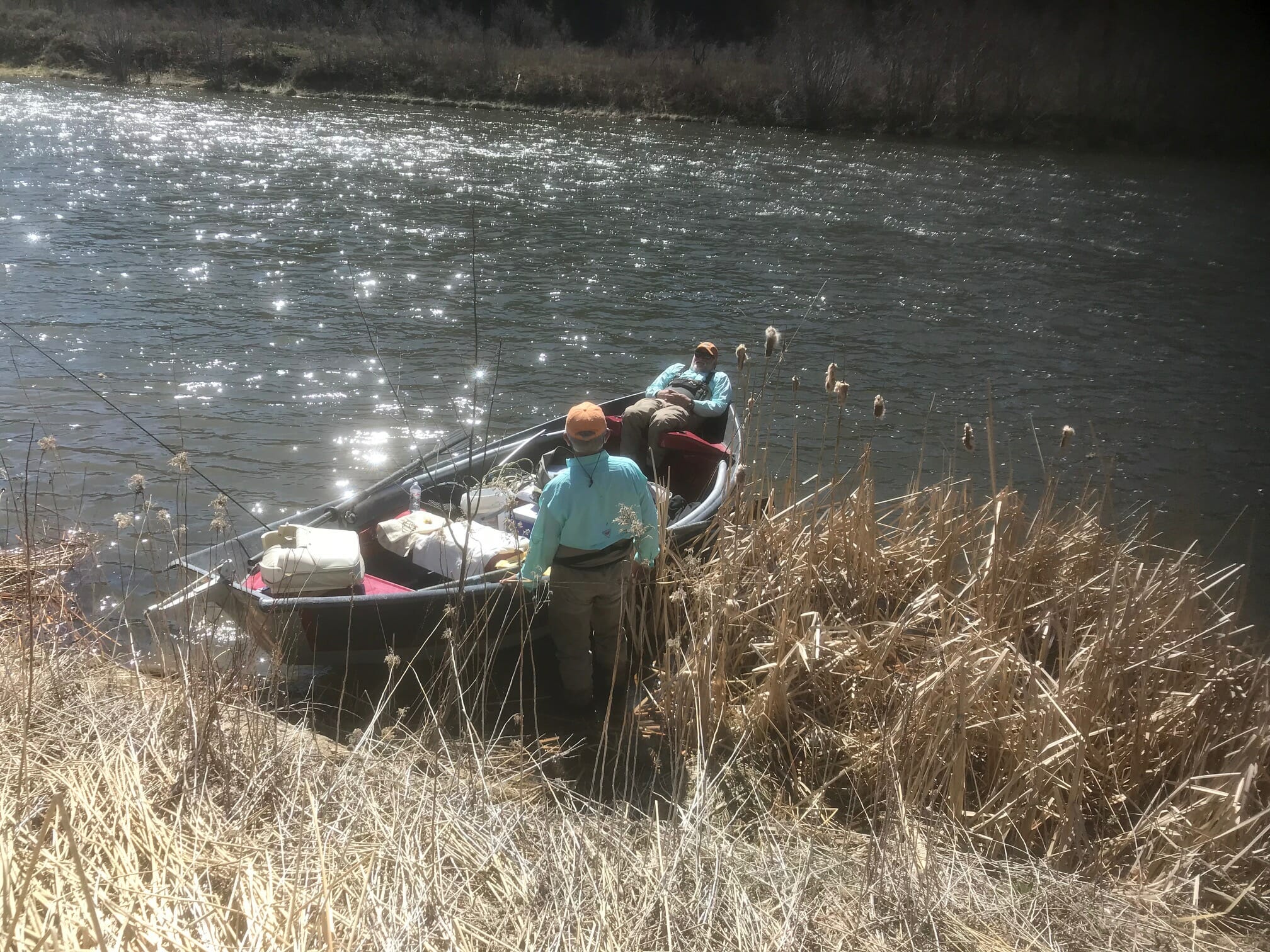Craig Harker and Matt Woodard on the Henrys Fork
By Chris Wood
Craig Harker and Matt Woodard, two native sons of eastern Idaho, sat in the front. The road hummed as we sped toward Ashton to get me a fishing license before we hit the Henry’s Fork.
“I remember it like yesterday,” Craig said. “After the farming, Grandpa and I would head to a tributary of the Middle Fork (of the Salmon) and fish for salmon. I held his hand and carried his cane rod. We only did that for a few years, because two years after they built the last dam on the lower Snake, they shut the salmon fishery down. That’s when I knew I would be a conservationist.”
Matt and Craig have fished together for 40 years. Like an old couple, they picked me up wearing nearly matching orange TU hats and aquamarine fishing shirts. Matt has led Trout Unlimited’s work in eastern Idaho for 17 years. Over the course of a day, I learned how he and his brother grew up on the family farm along the South Fork of the Snake. When it became too much for their Dad, the family put the farm into conservation. Decades later, it still provides benefits for eastern Idaho’s fish and wildlife.
Seventeen years ago, Trout Unlimited hired Matt. He worked with the Forest Service, and the Idaho Department of Fish and Game had the then-novel idea that by reconnecting the spawning and rearing tributaries of the South Fork of the Snake, they could give native Yellowstone cutthroat trout a better chance at surviving floods, fire, drought and the encroachment of non-native species. In 2017, Trout Unlimited reconnected more than 760 miles of rivers and streams across the country; and it all began on the South Fork.
Matt worked closely with the incredible volunteers of the Snake River Cutthroats chapter—its members have contributed more than $250,000 to restoration—and other partners to reconnect at least 40 miles of habitat on the South Fork. He is working with ranchers, irrigators, mining companies and others to do similar work on the Blackfoot in southeastern Idaho today. In both river basins, native Yellowstone cutties are coming back.
Matt and our other staff and volunteers in Idaho are responsible for protecting 9 million acres through the Idaho Roadless Rule. In the past few years, they have reconnected nearly 250 miles of stream and completed restoration on another 50.
Those results are impressive. Equally important, however, are the relationships and trust developing among irrigators, ranchers and farmers, utilities, power and mining companies and conservationists in places such as the South Fork, the Yankee Fork, the Owyhee, the Upper Salmon and the Blackfoot. That trust will be needed to drive conversations to remove the four lower Snake River dams in a socially and economically responsible manner—and by so doing recovering Idaho’s wild salmon and steelhead.
And, one day Craig Harker’s son may hold the hand of his grandchild as they walk a tributary of the Middle Fork to fish together for wild Idaho salmon.
Chris Wood is the president and CEO of Trout Unlimited. He lives in Washington, D.C., and works from TU’s Arlington, Va., headquarters.



